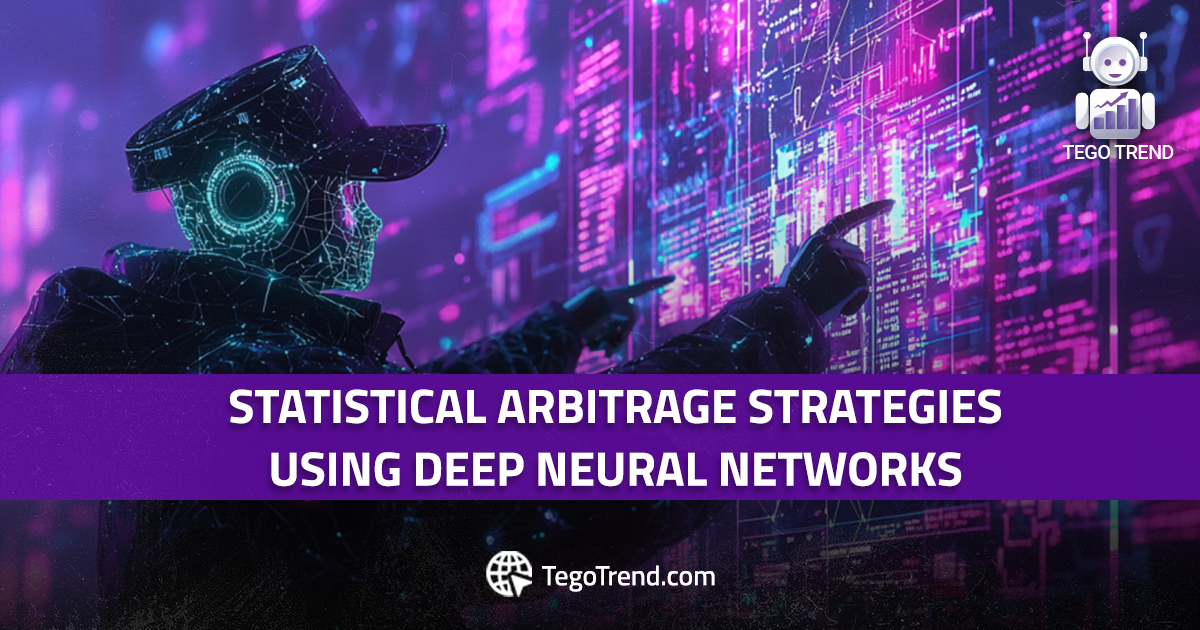Statistical Arbitrage Strategies Using Deep Neural Networks
In the world of quantitative trading, statistical arbitrage is one of the most powerful strategies used by professional traders and hedge funds to extract profits from financial markets. With the rapid advancement of artificial intelligence, deep neural networks (DNNs) have become a powerful tool for enhancing these strategies, enabling the discovery of more complex patterns and hidden relationships between financial assets. In this article, we will discuss how to integrate deep neural networks into statistical arbitrage strategies, starting from basic concepts to advanced models, with a comprehensive analysis of how to improve performance and reduce risks.
Understanding Statistical Arbitrage
Definition of Statistical Arbitrage
Statistical arbitrage is a trading strategy that relies on analyzing historical data to detect abnormal pricing discrepancies between correlated assets. This strategy exploits the assumption that the prices of these assets will revert to their statistical mean over time, providing opportunities for profit.
How Statistical Arbitrage Works
The strategy relies on mathematical and statistical models to identify assets that deviate from their historical relationships. For example, if two stocks typically move together but one declines while the other remains stable, a trader might open a buy position in the declining stock and a sell position in the stable one, assuming the prices will converge again.
Challenges of Traditional Statistical Arbitrage
- Incorrect Assumptions: Many traditional models assume that relationships between assets are constant over time, which is not always accurate.
- Inability to Detect Complex Patterns: Linear models like linear regression cannot capture non-linear patterns in markets.
- Increased Competition: As statistical arbitrage has become more widespread, markets have become more efficient, making it harder to achieve sustainable profits.
The Role of Deep Neural Networks in Statistical Arbitrage
Why Deep Neural Networks?
Deep neural networks are capable of handling large and complex financial data, enabling the discovery of non-linear patterns and hidden relationships between financial assets. Compared to traditional models, deep neural networks offer significant improvements in:
- Detecting Non-Linear Relationships: They can identify dynamic relationships between financial assets that linear models cannot capture.
- Adapting to Market Changes: They can continuously learn from new data and adapt to fluctuations in financial markets.
- Analyzing Multiple Datasets: They can integrate price data, economic indicators, and even market sentiment data from news and financial tweets.
Types of Neural Networks Used in Statistical Arbitrage
- Convolutional Neural Networks (CNNs)
Although CNNs are often used in image analysis, they can be effective in detecting complex temporal patterns in market data. They can be used to identify patterns in price or trading volume data across different time periods. - Recurrent Neural Networks (RNNs) and LSTMs
RNNs and Long Short-Term Memory Networks (LSTMs) are among the best tools for analyzing time-series data, making them ideal for analyzing and predicting price time series in statistical arbitrage strategies. - Generative Adversarial Networks (GANs)
GANs can be used to create market simulation models, helping to test statistical arbitrage strategies in virtual environments before implementing them in real markets.
Building a Statistical Arbitrage Model Using Deep Neural Networks
Steps to Build the Model
- Data Collection
Collect large-scale historical data, including:- Asset prices
- Trading volumes
- Economic indicators
- News and financial tweet data
- Data Preprocessing and Cleaning
- Remove noise and incomplete data
- Transform data into formats suitable for neural networks
- Choosing the Right Neural Network
- Use LSTMs for time-series data analysis
- Use CNNs for price pattern analysis
- Model Training
Train the neural network using historical data and test it on unseen data. - Parameter Tuning and Model Optimization
Adjust parameters such as learning rate, number of layers, and activation functions to improve performance. - Implementation in Real Trading
After testing the model in a simulation environment, apply it to real markets using an automated trading platform.
Challenges and Risks
- Overfitting
Overfitting the model to historical data can lead to poor performance in real markets. Techniques like Dropout and Regularization should be used to avoid this. - Changing Market Dynamics
Relationships between financial assets may change over time, rendering models ineffective. Regularly updating the model with new data can mitigate this. - Execution Risks
Implementing statistical arbitrage strategies using neural networks requires high-speed trading systems, and delays or technical errors can impact performance.
Practical Applications and Case Studies
- Hedge Funds and AI in Statistical Arbitrage
Major hedge funds like Renaissance Technologies and Two Sigma rely on advanced AI-based models to execute statistical arbitrage strategies. - Experimental Implementation on Cryptocurrency Market Data
A statistical arbitrage model based on LSTMs was tested on historical Bitcoin and Ethereum data, achieving a 78% success rate in predicting price movements.
Conclusion
Integrating deep neural networks into statistical arbitrage strategies is one of the most promising developments in quantitative trading. These models can uncover patterns and opportunities invisible to traditional models, providing a strong competitive edge for traders and hedge funds. However, these models must be used cautiously due to challenges such as changing market dynamics and overfitting. By continuously improving and testing these models, more efficient and profitable trading strategies can be achieved in evolving financial markets.
You can learn about automated trading through our Automated Trading Learning Series on our YouTube channel via the following link


